American Coots are, without question, the most aquatic, common and widely distributed rail species in North America. Clumsy and awkward fliers, they require long running take-offs to become airborne but they are skilled swimmers – largely due to their lobately webbed toes.
And oh, are they ever ornery!
But first, allow me to make a few excuses… These images of fighting coots were taken several years ago when I was relatively new to photography. My settings weren’t particularly appropriate so I’m not including them here. And most of these photos were shot in JPEG rather than RAW, so my processing options were extremely limited when I tried to adjust exposure, so the frustratingly white bill is pretty bright in a few of these images.
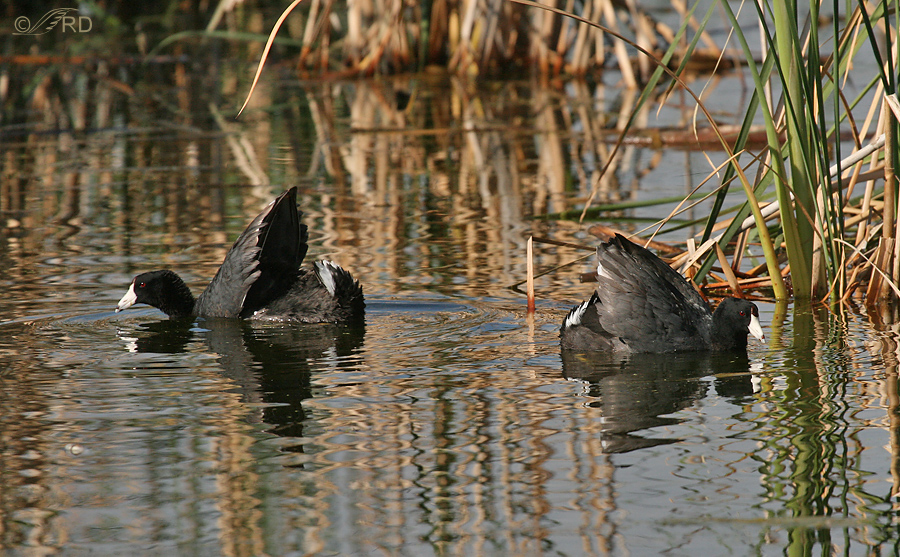
This is one of the aggressive postures used by males to challenge other males. Whenever I see this I know that all hell is about to break loose and I’d better be ready.
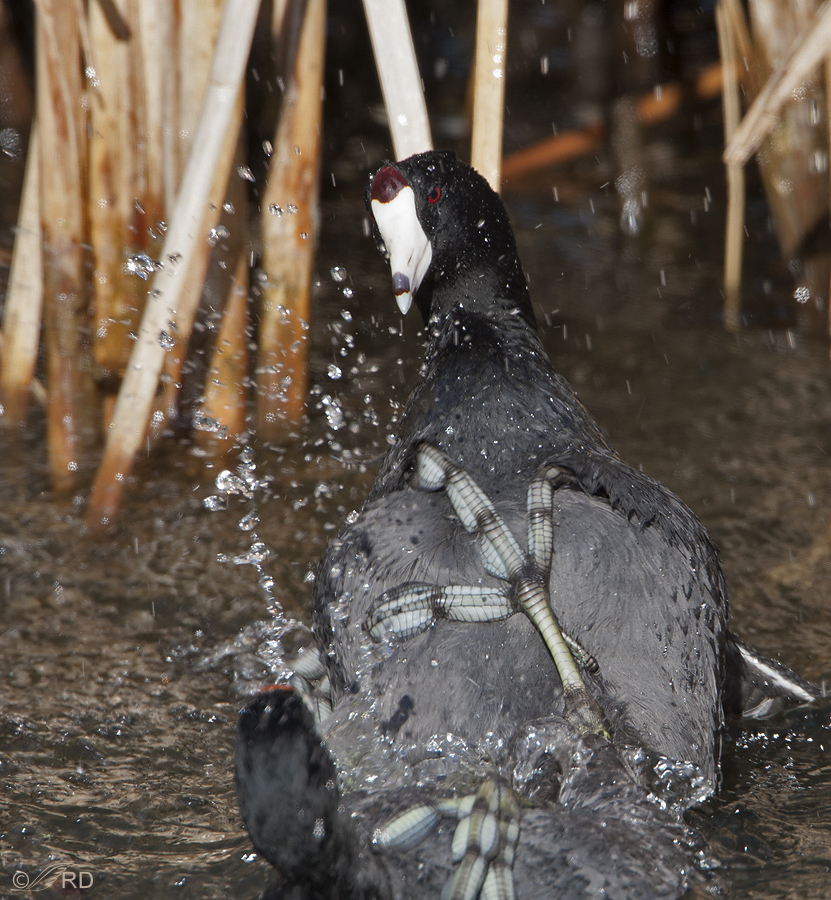
In my experience, coots have two primary fighting strategies. One is for each bird to lie on their backs in the water while propped up by their wings and tails and strike out at each other with their feet and claws. In this fighting position, their defense is to try to grasp the opposing birds feet. Here we get a good look at those unusual lobed toes. If they become locked together they then fight with their bills.
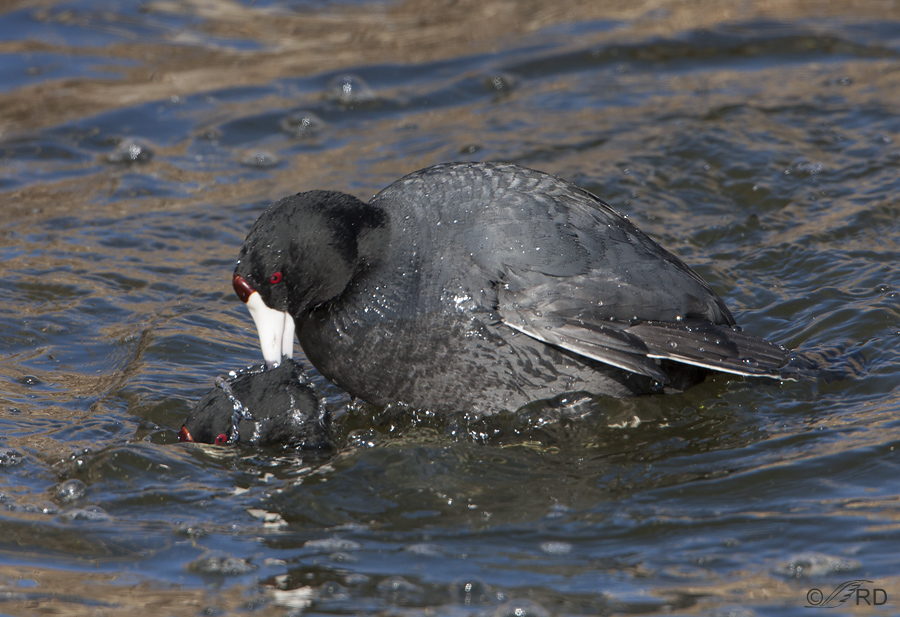
The second fighting strategy uses bills and wings as weapons. If one bird gains the advantage it often tries to force its opponent underwater.
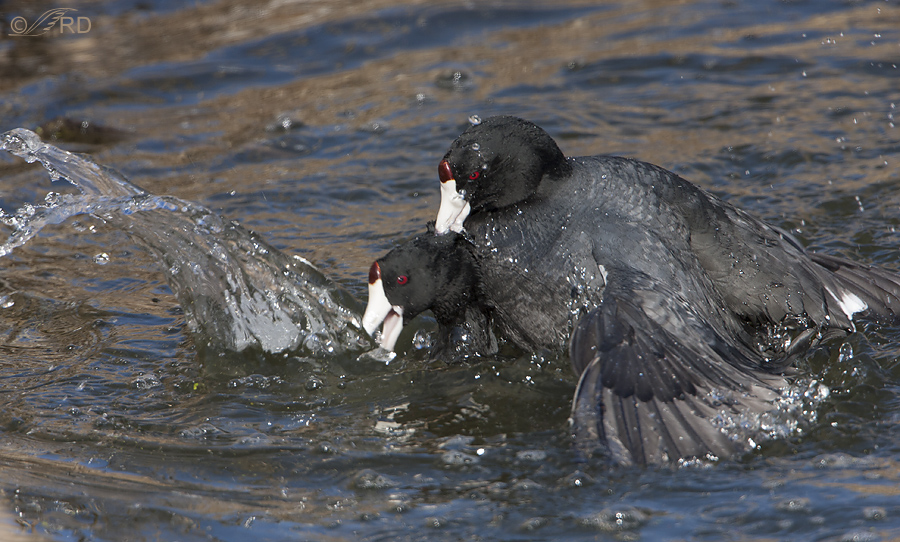
The losing bird fights desperately to keep its head on the surface so it can breathe.
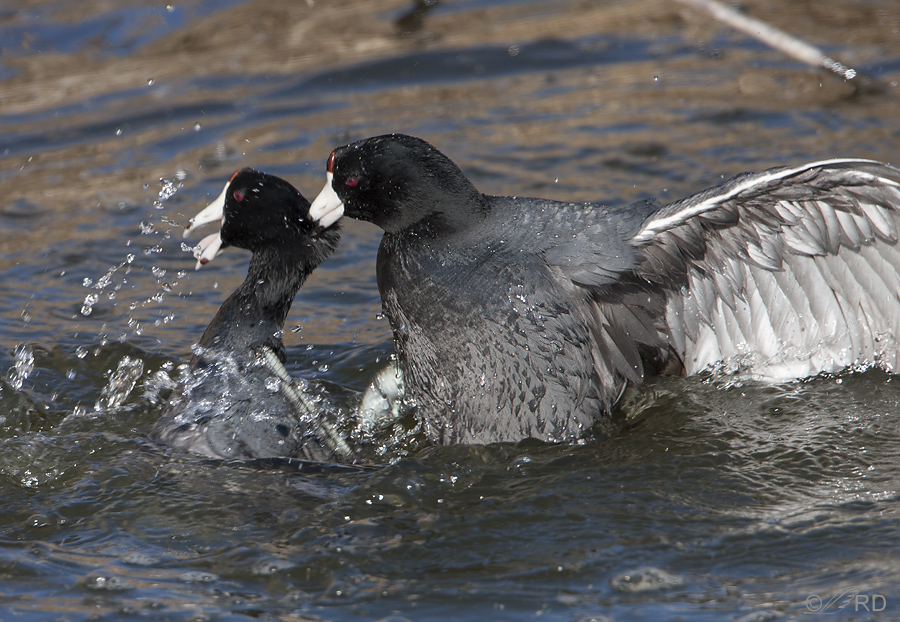
Sometimes it works and sometimes it doesn’t. Occasionally the fight continues with both birds under water and it’s not unknown for one of the combatants to be killed, though usually the loser retreats safely.
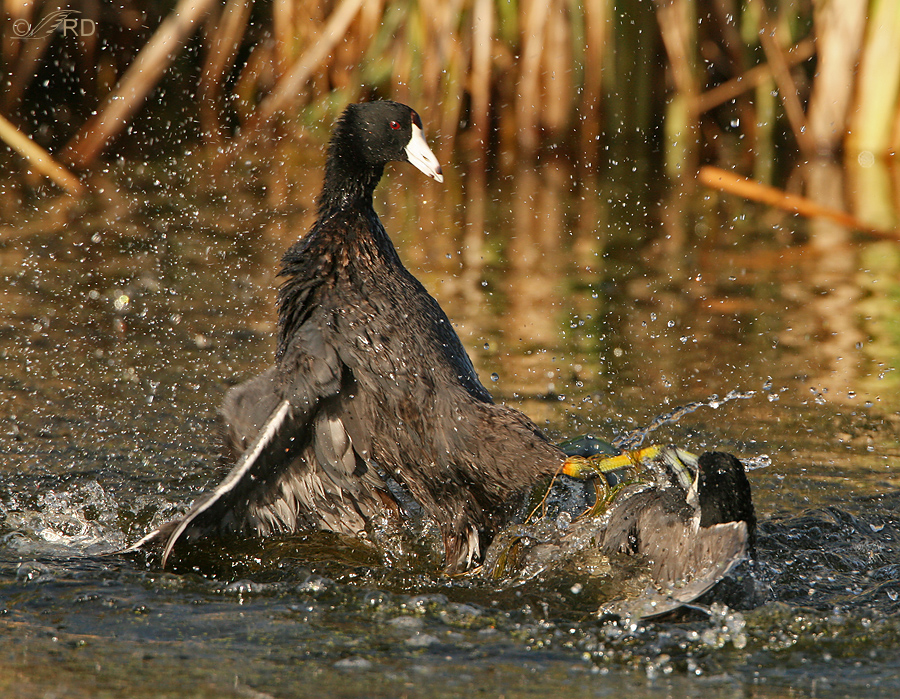
When they’re fighting on their backs they attempt to rake the breast of their opponent with their claws. Several times, as in this photo, I had the distinct impression that they also aim for the eyes.

At times the action is so explosive that you almost can’t see the coots through all of the flying water.

Typically, a fight is between two males but at times the conflict becomes so intense and confused that other coots of either sex can be drawn into the melee. At times, a male will even attack its own mate by mistake!
All too often I ignore coots, which is another bad habit I need to work on. When the males start feeling their oats in the springtime they can be wonderful photographic subjects if you’re into behavior photography as I am.
Ron


Ron,
Wonderful images of nature in the raw, or is it nature in the jpeg?(a little photography humor there)
I showed your sentence “All too often I ignore coots, which is another bad habit I need to work on.” to my wife and suggested she start paying more attention to me…

Cheers,
Dick
LOL! I hope that line works with your wife, Dick. If I’d said “old coots”, it would surely apply to me too.
Love it! I especially love the capture of the lobed feet. Great shots!
Bryce, I almost didn’t include that shot because it has some technical issues but I liked it for the same reason you did.
Wonderful action shots Ron. Very interesting to see their strategies and how they take on one another. I almost always ignore the Coots at Sweetwater but I think I may start paying more attention to them. Excellent series.
Thanks, Jim. Watch for these behaviors in the springtime especially.
Oh my goodness what a bunch of rascally coots!! Mean! The beak pinching the feathers and skin of the other bird, yikes!! And those feet! Sheesh…
Your comment made me smile, Nicole. That’s just the way I react when I see them fighting…
These are amazing, I never imagined. My only experience with American Coots was in a small lake in central Florida, of what seemed to be a monogamous pair, as it lasted for almost three months. Could this then be the process they undergo for picking their partners??
Marie, These birds are beligerent and quarrelsome any time of year but especially so during nesting season (when these shots were taken). In spring, their fights are usually fueled by efforts to expand or defend territory. And yes, they are monogamous. Thank you.
Even the most cursory examination of bird behaviour gives a whole new appreciation to the term ‘pecking order’ doesn’t it? They can be truly aggressive, not to say vicious.
I loved this series, and am in awe of those feet!! Thank you Ron.
Yep, “pecking order” in the literal sense. Thanks, Elephant’s Child.
What great action shots! I have a soft place in my heart for these ubiquitous little clowns, thanks for the wonderful descriptions, too.
I have the same “soft spot” for them, Tana. They’re just so raucous and “in your face”.
Ron they look like they are mating in the first ones. But i saw two fighting in a pond this summer and yes, a lot of fighting. great captures.
Thanks, Jane. Believe me, those two weren’t mating, though I see how it could be taken that way.
What fantastic photography! Great shots, Ron. You have truly become an ornithological war photojournalist.
Wow! I always wanted to be one of those, Dwynn. Thanks for the promotion.